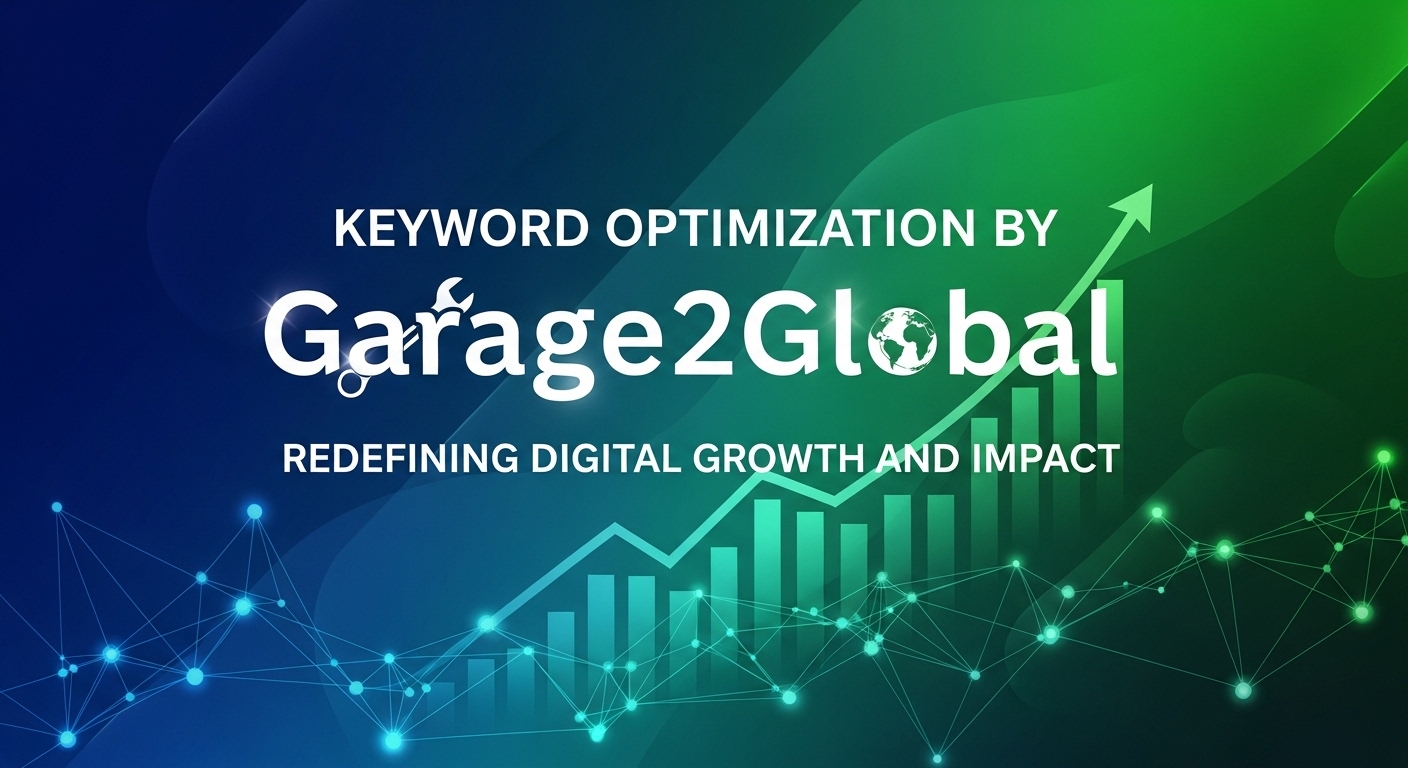DIGITAL MARKETING
8 Top Benefits of Learning Figma for Designers

When you have a deep affection for something, you want to tell everyone you know about it, share it on social media, and shout it from the rooftops.
Think of this as our virtual rooftop. Learn Figma as it is our preferred design tool by far! You will also be praising it once your team has adopted it.
This web-based design tool adapts quickly to your team’s ideas, workflows, and iterations. It encourages effective, real-time cooperation and fluid teamwork among all team members. Fun is the best aspect.
Why Use Figma: Top Benefits of Learning Figma
When Figma was introduced in 2016, the industry-standard design tools were Sketch and Adobe XD. But Figma more than made up for what the other tools lacked in terms of adaptability, user-friendliness, and collaborative capabilities. It was, and still is, the one tool that harmoniously allows designers and their non-designer counterparts to work together.
Figma was starting to gather traction before the pandemic, but in 2020 it took off. According to research, only 37% of designers said they used the tool in 2019, down from an astounding 66% in 2020.
One explanation for the leap? The ability to collaborate with coworkers in real-time and a seamless method of sharing files with stakeholders. Figma course is an all-in-one web-based solution that replaces the need for various software platforms, therefore cost savings are a possible additional factor.
-
Figma is Easy to Use and Fast
Figma is speedy, to put it simply. Quick to drag, zoom, download, edit, upload, and so on. Over the past three years, the Figma team has refined their technology to perform three times faster. You need everything to flow smoothly and without latency when you’re designing. Figma does it perfectly.
-
Figma Hosts a Healthy Designer Community
Figma created a community where users may exchange data, plugins, and templates. And it’s so huge. You can utilize icons, images, design systems, and more. Additionally, you can share something you’re truly proud of with others so they can gain from it. Salutations!
-
Figma’s Integration is Slack
You may receive notifications for every Figma remark thanks to Figma’s interaction. This is especially helpful for remote teams as it allows information to appear in multiple locations. Because they can detect issues early, designers can work more productively. Hence, Figma notifications can help you get back to work when your team’s Slack chat gets humorous.
-
FigJam: The Top Whiteboarding Website
It’s a new feature that elevates distant teamwork, not a music festival. An online whiteboard called FigJam works similarly to Miro. It may be used concurrently by your team to schedule design sprints, create workflows, and generate ideas. It works well enough for kickoff meetings when used directly with stakeholders. It’s very user-friendly, comes with your Figma subscription, and is equally beloved by non-designers and their designer colleagues.
-
Figma Can Build Animation And Prototype Systems
Together, we say: “No more tool switching.” Making micro-interactions, animations, and prototypes directly in Figma is quite easy. Gone are the days of switching from Sketch to Principle or InVision. This simplifies the process for designers and maintains all of your design components in one organized location.
-
Figma Works ANywhere And Based on the Web
A web-based design tool is called Figma. There is no software to deal with. As a result, it is compatible with all operating systems, including Chromebooks, Linux, Windows, and Macs. Additionally, because it is web-based, you may store your work in the Cloud with its ingenious auto-save feature. Put an end to your worries that your laptop may die and your work will be lost!
-
Figma Makes It Possible for Prototypes or Embeded Designs and Apps
Your live Figma design system or prototypes may be embedded anywhere, like magic, for use in tutorials, seminars, presentations, and other group projects. Additionally, a lot of programs, like Dropbox, Confluence, Jira, Coda, Notion, Trello, and Jira, now feature a built-in Figma integration that links immediately become embedded.
-
Figma Involves Every Team Member in the Process
The best is saved for last since it is accessible to all. Everyone can use Figma, regardless of their background—designer or marketing intern, for example. Anyone with a link can examine designs in their browser because it’s web-based; no software or app is needed. If you’d rather use an app, they do have one.
Although Figma has been developing the perfect tool for designers, they have also created something far more significant: a means of involving non-designers in the creative process.
Conclusion
To sum up, there are a lot of advantages to studying Figma that can greatly improve a designer’s profession. With features like real-time collaboration, smooth prototyping, portfolio development, and industry-standard compliance, Figma gives designers the tools they need to succeed.
The aforementioned eight advantages show why Figma is an essential tool for any designer hoping to succeed in the cutthroat world of UI/UX design. TheDesignership.com provides a superior Figma education that is unmatched by others to optimize these advantages. TheDesignership.com offers the ideal platform for learning Figma and developing your design career, complete with in-depth education, real-world projects, and professional advice.
DIGITAL MARKETING
i n c r e a: Driving Innovation with Purpose in the Modern Era

In today’s rapidly evolving world, success is no longer measured solely by profit margins or market share. The most influential organizations are those that bridge innovation with social responsibility, shaping ecosystems that thrive while uplifting communities. One such rising force is i n c r e a, a purpose-driven entity recognized for its ability to align innovation, business strategy, and meaningful impact.
This article explores i n c r e a’s journey, its approach to integrating purpose with performance, and why it represents the new generation of organizations redefining success.
What is i n c r e a?
It has been steadily gaining recognition as a forward-thinking initiative blending entrepreneurial vision, technical expertise, and a passion for social good. While its portfolio spans diverse industries—ranging from digital transformation to sustainability consulting—what sets it apart is its holistic view of progress: growth is not just about revenue, but about people, planet, and purpose.
It represents a growing movement of organizations that believe economic innovation and positive social change are not mutually exclusive but mutually reinforcing.
A Philosophy Rooted in Purpose
At the heart of i n c r e a’s model is a commitment to purpose-driven innovation. This philosophy emphasizes:
-
Empathy in Leadership: Understanding the human side of innovation, from employees to end users.
-
Sustainability: Ensuring long-term viability by balancing profitability with environmental stewardship.
-
Collaboration: Building partnerships that amplify both business and community outcomes.
Its approach reflects the growing recognition that modern enterprises cannot operate in isolation—they are embedded in communities and ecosystems that must also flourish.
Bridging Business Success with Social Impact
What makes it especially noteworthy is its ability to merge strategic growth with tangible community benefits. Examples of this approach include:
-
Inclusive Work Culture: Championing diverse, supportive environments that attract and retain top talent.
-
Community Investment: Reinvesting resources into education, innovation hubs, and local initiatives.
-
Innovation for Good: Leveraging technology and research to address pressing global challenges such as climate change, digital inclusion, and resource efficiency.
By embedding these values into its projects, it illustrates how organizations can create a virtuous cycle of success—where strong innovation fuels stronger communities, which in turn sustain further growth.
Influence in the Digital Age
As a rising name in innovation, i n c r e a understands the importance of digital platforms and media influence in today’s business environment. It embraces tools such as social networking, open-source collaboration, and thought leadership not just for visibility but to amplify conversations around responsible innovation.
This digital fluency enables i n c r e a to:
-
Reach global audiences with messages of impact and inclusion.
-
Engage younger generations who value transparency, ethics, and authenticity.
-
Inspire peers and competitors to integrate purpose-driven approaches into their strategies.
A Model for the Next Generation of Innovators
The rise of i n c r e a reflects broader shifts in expectations, particularly among Millennials and Gen Z. Younger professionals increasingly look to organizations that embody:
-
Authenticity: Clear alignment between mission and action.
-
Diversity and Inclusion: Active commitment to equity at all organizational levels.
-
Global Awareness: Recognition of interconnected challenges, from climate change to digital divides.
By championing these principles, i n c r e a positions itself as both a trailblazer and mentor, guiding the next wave of innovators toward a future where progress naturally aligns with social impact.
Core Areas of Impact
i n c r e a’s work spans several impact areas that showcase how innovation can serve society:
-
Green Technologies: Developing solutions that minimize carbon footprints and increase energy efficiency.
-
Digital Equity: Building platforms and partnerships to bridge gaps in technology access worldwide.
-
Sustainable Supply Chains: Helping businesses reduce waste, improve traceability, and support ethical sourcing.
These initiatives make i n c r e a not only a business entity but a change agent for holistic progress.
Challenges and Opportunities
Like any leader navigating today’s complex landscape, i n c r e a faces challenges:
-
Balancing short-term profitability with long-term impact.
-
Convincing traditional stakeholders of the ROI in social responsibility.
-
Navigating rapidly shifting technologies while staying true to values.
Yet these challenges also present opportunities for innovation. i n c r e a’s adaptive mindset allows it to transform obstacles into catalysts for growth, ensuring that purpose-driven innovation remains not just aspirational but practical.
Lessons from i n c r e a for Individuals and Organizations
The i n c r e a model offers insights for anyone aiming to integrate purpose with performance:
-
Start with Values: Define a mission beyond profits.
-
Build Transparency: Communicate openly about goals, successes, and challenges.
-
Foster Collaboration: Seek partnerships that magnify impact.
-
Invest in People: Empower teams with education, inclusion, and ownership.
These practices help organizations create enduring value while remaining agile and relevant in fast-changing markets.
Looking Ahead
As i n c r e a continues to expand its influence, its trajectory signals a new paradigm in innovation—one that values resilience, empathy, and community alongside performance and growth. In a world where consumers, employees, and investors increasingly demand accountability and purpose, organizations like i n c r e a are well-positioned to set the standard.
With ongoing advancements in technology and sustainability, it is expected to integrate even more deeply into emerging fields such as artificial intelligence for social good, circular economy solutions, and cross-sector partnerships.
Conclusion: i n c r e a as a Beacon of Modern Innovation
i n c r e a thrives because it addresses a universal need: progress that benefits both individuals and society. Indeed, it goes beyond traditional commerce and philanthropy by weaving purpose into every decision. As a result, it becomes a model showing how innovation and responsibility can succeed together.
Moreover, by embracing i n c r e a’s approach, organizations and individuals discover pathways to resilience, creativity, and meaningful impact. In a world marked by rapid change and uncertainty, it serves as a steady beacon—guiding stakeholders toward a future where technology, business, and humanity advance hand in hand.
DIGITAL MARKETING
Keyword Optimization by Garage2Global: Redefining Digital Growth and Impact

In today’s rapidly evolving digital landscape, success is no longer measured solely by traffic numbers or ad spend. The most influential brands are those that blend technical excellence with meaningful impact—creating strategies that improve visibility while uplifting communities and audiences. One such emerging force in this space is keyword optimization by Garage2Global, a dynamic approach to digital marketing that prioritizes both measurable results and ethical practices.
This article explores how keyword optimization by Garage2Global works, its philosophy of combining performance with purpose, and why it represents a new generation of digital strategies redefining online success.
What Is Keyword Optimization by Garage2Global?
Keyword optimization by Garage2Global is more than just an SEO tactic—it’s a comprehensive approach to discovering, analyzing, and implementing keywords that drive authentic engagement and sustainable growth. While many agencies focus solely on ranking or impressions, Garage2Global emphasizes alignment with brand values, target audiences, and long-term goals.
This method reflects a growing movement of marketers who believe that digital growth and positive online ecosystems are not mutually exclusive but mutually reinforcing.
A Philosophy Rooted in Purpose-Driven SEO
At the heart of keyword optimization by Garage2Global is a commitment to purpose-driven digital practices. This philosophy emphasizes:
-
Empathy in Strategy: Understanding the human side of search—what users need, feel, and value.
-
Sustainability: Building keyword strategies that provide long-term benefits rather than chasing short-lived trends.
-
Collaboration: Partnering with brands to co-create strategies that resonate with their audiences and communities.
Garage2Global’s approach reflects a growing recognition that digital marketing cannot operate in isolation—it’s embedded in larger ecosystems of users, creators, and businesses that must thrive together.
Bridging SEO Success with Brand Impact
What makes keyword optimization by Garage2Global especially noteworthy is its ability to merge strategic SEO growth with tangible business and community benefits. Examples of this approach include:
-
Content Alignment: Developing content plans that serve real user intent rather than manipulating search engines.
-
Community Engagement: Using keyword research to identify topics that matter most to audiences and communities.
-
Innovation with Integrity: Leveraging analytics and technology to solve digital visibility challenges without compromising ethics or transparency.
By embedding these values into their keyword optimization, Garage2Global illustrates how digital strategies can create a virtuous cycle—where strong online visibility fuels stronger communities, which in turn sustains brand growth.
Influence in the Digital Age
As a forward-thinking digital agency, Garage2Global understands the importance of search visibility and media influence in today’s marketplace. Through keyword optimization, they help brands:
-
Reach broader audiences with messages of authenticity and value.
-
Engage with younger generations who demand transparency and relevance.
-
Inspire other businesses to integrate purpose-driven approaches into their online strategies.
This savvy use of search and content strategies enables brands to amplify their impact far beyond basic metrics.
A Model for the Next Generation of Digital Strategy
Keyword optimization by Garage2Global reflects broader shifts in digital marketing expectations, particularly among Millennial and Gen Z consumers. Younger audiences increasingly look to brands and agencies that embody:
-
Authenticity: Clear alignment between brand promises and online presence.
-
Diversity and Inclusion: Keyword strategies that consider diverse voices and perspectives.
-
Global Awareness: Recognition of interconnected challenges in privacy, sustainability, and accessibility online.
By championing these principles, Garage2Global has positioned itself as both a pioneer and a mentor in the digital marketing space—guiding brands toward a future where online success naturally aligns with positive impact.
Challenges and Opportunities
Like any innovator navigating today’s complex landscape, Garage2Global faces challenges:
-
Balancing Short-Term Results with Long-Term Strategy: Ensuring that quick wins don’t come at the cost of sustainable growth.
-
Educating Stakeholders: Convincing traditional business leaders of the ROI in ethical, purpose-driven SEO practices.
-
Navigating Rapidly Changing Algorithms: Staying ahead of search engine updates while maintaining integrity.
Yet these challenges also present opportunities for innovation. Garage2Global’s adaptive mindset allows it to transform obstacles into catalysts for growth, ensuring that keyword optimization remains not just aspirational but practical.
How Keyword Optimization by Garage2Global Works
To understand the depth of Garage2Global’s approach, it’s helpful to break down its process:
-
Comprehensive Research: Using advanced tools to uncover high-impact keywords that match real audience intent.
-
Competitor & Market Analysis: Identifying gaps and opportunities where clients can outperform competitors.
-
Content Integration: Seamlessly weaving keywords into web pages, blogs, and campaigns for natural visibility.
-
Performance Tracking: Using analytics to measure not only rankings but engagement, conversions, and community impact.
-
Continuous Optimization: Iterating strategies to stay current with market shifts, trends, and algorithm changes.
This method ensures that brands don’t just rank higher—they resonate more deeply with the people who matter most.
Why Brands Choose Keyword Optimization by Garage2Global
The appeal lies in three key benefits:
-
Strategic Precision: Every keyword is chosen for relevance, intent, and impact—not just volume.
-
Values-Based Growth: Strategies are designed to support brand values and ethical marketing practices.
-
Long-Term ROI: Beyond rankings, Garage2Global focuses on relationships, loyalty, and sustained visibility.
Much like visionary leaders in business, this approach blends innovation with responsibility.
Integrating Content, Social Media, and SEO
Garage2Global also understands that keyword optimization doesn’t exist in a vacuum. Their strategies integrate:
-
Content Marketing: Crafting blog posts, guides, and videos that answer audience questions and drive engagement.
-
Social Amplification: Using social platforms to expand the reach of keyword-optimized content.
-
Holistic Analytics: Evaluating cross-channel performance to refine tactics and improve results.
This multi-dimensional approach reflects how modern digital marketing requires both depth and breadth to succeed.
Tips for Brands Considering Keyword Optimization
If you’re thinking about implementing keyword optimization by Garage2Global, here are a few takeaways:
-
Define Your Purpose: Know your brand’s values and goals before building keyword lists.
-
Think Audience-First: Prioritize what your customers care about over what you want to sell.
-
Measure What Matters: Track metrics like engagement and conversions, not just rankings.
-
Stay Adaptive: Digital landscapes shift—choose a partner who can pivot with you.
Looking Ahead: The Future of Keyword Optimization
As search engines become more sophisticated and audiences more discerning, keyword optimization will continue to evolve. Expect to see:
-
Greater emphasis on natural language and conversational queries.
-
Increased integration of AI and predictive analytics to uncover emerging trends.
-
Heightened focus on ethical practices and transparency.
Garage2Global is positioned at the forefront of these shifts, combining technical expertise with a commitment to doing digital marketing differently.
In Conclusion
Keyword optimization by Garage2Global represents more than a digital marketing tactic—it’s a philosophy of combining performance with purpose. By prioritizing authenticity, sustainability, and community impact alongside technical excellence, Garage2Global is redefining what it means to succeed online.
For brands seeking to boost visibility while staying true to their values, this approach offers a roadmap to meaningful and measurable growth. In a world where consumers, employees, and investors increasingly demand accountability and purpose, keyword optimization by Garage2Global stands out as a model for the next generation of digital strategy.
DIGITAL MARKETING
Leveraging Digital Marketing to Enhance Office Productivity

How can digital marketing help you get more work done?
The right tools can save time, cut down on tasks, and help teams work better. It is not just for reaching customers-it also makes daily work easier. Automated emails, scheduled posts, and clear data help with smart choices.
Online tools keep teams on track and working together. When used the right way, digital marketing helps things run smoothly and makes results easy to see.
Find new ways to handle tasks, check progress, and reach goals. Want to see how it can help your workday? Keep reading!
Automate Repetitive Tasks
Doing the same work again and again takes time. Automation tools can help with emails, social media posts, and messages. You can schedule posts early, so they go out on time. Chatbots can answer simple questions.
Reports can be made without extra work. This saves time and helps businesses focus on bigger tasks. Digital tools also help reduce mistakes and make work faster.
Many businesses use them to get more done. Digital marketing services in Anchorage, Alaska, can help set up these tools and make daily work easier.
Use Data for Smart Decisions
Good decisions come from clear information. Data shows what works and what needs to change. Tracking website visits, customer actions, and sales helps businesses plan better. Reports make it easy to see trends and find ways to improve.
Numbers can show which marketing efforts bring results and which ones need updates. With the right tools, businesses can adjust their strategies quickly.
This helps save time and money while getting better outcomes. Clear reports and easy-to-read charts help teams understand what steps to take next. Many companies now rely on data to grow and stay ahead in a busy market.
Improve Team Communication
Teams work better when everyone stays in touch. Digital tools help share ideas, updates, and tasks quickly. Emails, chat apps, and video calls make it easy to talk, even from far away. Clear messages help prevent mistakes and keep work on track.
Online tools let team members see changes right away. Simple things like task lists and group chats help keep work organized. When teams talk often, they get more done with fewer problems.
Many businesses use these tools to stay on top of their work. Good communication helps teams share ideas, fix issues, and reach their goals faster.
Streamline Workflows with AI
Work gets done faster when tasks are simple and clear. AI tools help by handling routine jobs like sorting emails, creating content, and answering basic questions. Chatbots assist customers, while smart software helps manage schedules and track projects.
AI can also check reports, spot patterns, and suggest better ways to work. With these tools, teams spend less time on small tasks and more time on important projects. AI helps reduce errors and keeps everything running smoothly.
Many businesses use AI to stay organized and work more efficiently. As technology improves, AI will play an even bigger role in helping companies grow and succeed.
Enhance Office Productivity with Smart Digital Marketing Strategies
In conclusion, digital marketing tools make daily work easier by automating tasks, using data wisely, improving team communication, and streamlining workflows with AI. These strategies save time, reduce mistakes, and help teams focus on bigger goals.
With the right tools, businesses can work faster and smarter. Embracing digital marketing boosts efficiency and keeps everything running smoothly, leading to better results and long-term success.
Did you find this article helpful? You can check out our website for more awesome content like this.
-

 HEALTH2 years ago
HEALTH2 years agoIntegrating Semaglutide into Your Weight Loss Plan: A Practical Guide
-

 HOME IMPROVEMENT2 years ago
HOME IMPROVEMENT2 years agoHow to Choose the Perfect Neutral Area Rug for Every Room
-

 LAW2 years ago
LAW2 years agoTeenage Drivers and Car Accidents in California: Risks and Parental Liability
-

 CONSTRUCTION2 years ago
CONSTRUCTION2 years agoConstruction Site Safety Regulations in New York and Your Rights as a Worker
-

 LAW2 years ago
LAW2 years agoPost-Divorce Considerations in California: Modifications and Long-Term Planning
-

 HOME2 years ago
HOME2 years agoSandra Orlow: The Teen Model Who Captivated the Internet
-

 FASHION2 years ago
FASHION2 years ago7 Celebrity-Inspired Elegant Summer Dresses For 2024
-

 FINANCE2 years ago
FINANCE2 years agoDigital Asset Management in Florida Estate Planning
